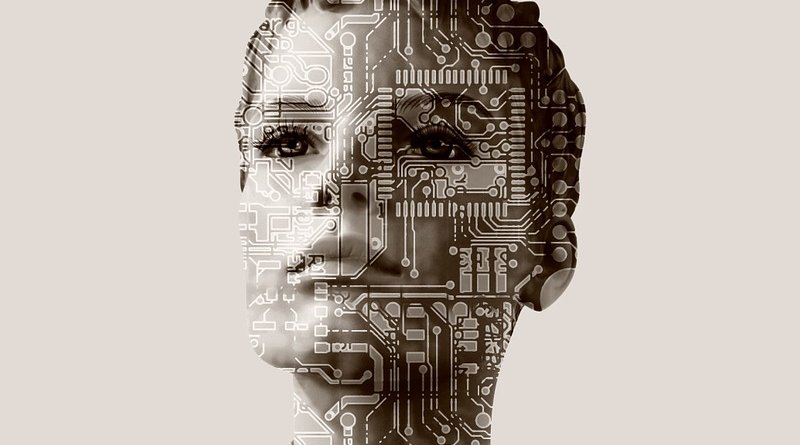AI And Technology Convergence: Catalyst Or Irritant Of Change? – Analysis
By RSIS
Technology is not invented because of advances in a siloed scientific discipline, but rather because of convergence between different fields and interactions with social structures. With this in mind, how will governmental responsibilities be affected by technology-driven changes in the international system?
By Zoe Stanley-Lockman*
Governments have lost their status as engines of innovation in the 20th century, but that does not mean they do not have a role to play today. Through investments, policy incentives, and regulation, governments wield important tools to shape the way that technological innovation intersects with social structures.
This exact intersection, especially in relation to the term “technology convergence,” is worth exploring, Scientists Mihael Roco and William Bainbridge describe technology convergence as a fusion between disciplines with shared methodologies, theories, and goals.
What is Technology Convergence
Technology convergence also means considering the impact on people and power structures – be it at the individual, organisational, community, societal, or global scale. To this end, the shared goals are important for governments so that a greater purpose, not just the technology, drives decisions.
After providing an example of this type of convergence, the trend is examined in light of the governmental responsibilities that Roco and Bainbridge have described. These responsibilities are to set long-term research priorities and facilitate conditions to invent and deploy beneficial technologies. At the same time, they are to respect the ethical and social implications of potential uses of the technologies.
The example of neuroscience converging with high-tech inventions makes the concept of technology convergence more concrete. Although decades old in ideation, hardware like neuromorphic chips and artificial intelligence (AI) systems called neural nets have recently become cutting-edge. These technologies allow computers to work quickly and learn relatively complex tasks.
They derive their names from the fact that they mimic qualities of the human brain, like its structure and energy efficiency. In this example, neuroscience is not merely an inspiration, but has actually become part of the baseline for pushing forward the boundaries of high-tech inventions.
Advances in neuroscience may have amplifying effects when they become integrated into the design of these cutting-edge technologies, including in AI or even brain-computer interfaces. To see the true impact of these technologies means understanding how humans interact with them, as can be learned about in social sciences and humanities.
Introducing these social elements is important because technology often plays a role irritating or alleviating existing problems. Just as technology does not cause problems alone, it should not be seen as a solution itself.
Responsible Innovation
Technological innovation is becoming increasingly complex, particularly because it relies on the convergence between different fields. It also means that the pace of innovation may be increasingly difficult for decision-makers to anticipate. This is not because governments are no longer the primary innovation drivers, but rather because the ingredients are too numerous and fast-evolving to monitor.
Governments’ roles in managing technology instead relies on steering development in a way that benefits their societies – or even humanity more broadly. One moniker for this, championed by the public and private sectors alike, is responsible innovation.
Responsible innovation can be carried out in accordance with the three governmental responsibilities of setting long-term research priorities, creating the favourable conditions for invention and deployment, and managing ethical and social aspects including potential abuses of technology. Instead of seeing these as separate questions, the ways they inform each other provide governments with a more robust role.
Setting long-term research priorities is difficult because it involves protracted investment and the right environment to enable creativity to grow into innovation. Often this takes the form of nostalgia to replicate a “Sputnik” or “moonshot” style of innovation. Because this mission-driven, exorbitant investment may not be feasible or sustainable, it becomes more important to create the conditions for broader ecosystems to flourish beyond the grasp of government. This still includes public investment in basic research – without which many advances in computing, AI, energy storage technologies, and autonomous vehicles would not be seen today.
It also includes raising the profile of technology mediators and experts in areas such as history, anthropology, the sociology of science, and ethics. The governmental role in baking the ethical and societal implications of potential technology into earlier stages of the innovation lifecycle is perhaps the most urgent one.
Aligning with Human Values
As inventions and societies become increasingly interconnected, more and more industries have to consider how their products and services become accelerants or irritants of societal change.
To this end, the governmental role includes facilitating convergence. This means encouraging more interdisciplinary efforts and more explicit recognition of the socio-technical nexus that many innovations epitomise.
Today, these conversations converge around AI ethics and governance. It is important to get these preliminary questions right because AI is a general-purpose technology, like electricity or the steam engine, that will affect all sectors. These questions become even more important when designing the governance of other emerging technologies – and AI as such can be seen as the groundwork for governance of future technology convergence, when questions of human augmentation become more mainstream.
For governments, steering these developments can mean aligning technological development with human values to the benefit of society – as well as asserting their role in relation to evolving conceptions of power that increasingly involve technology.
*Zoe Stanley-Lockman is an Associate Research Fellow with the Military Transformations Programme (MTP), S. Rajaratnam School of International Studies (RSIS), Nanyang Technological University (NTU), Singapore.

